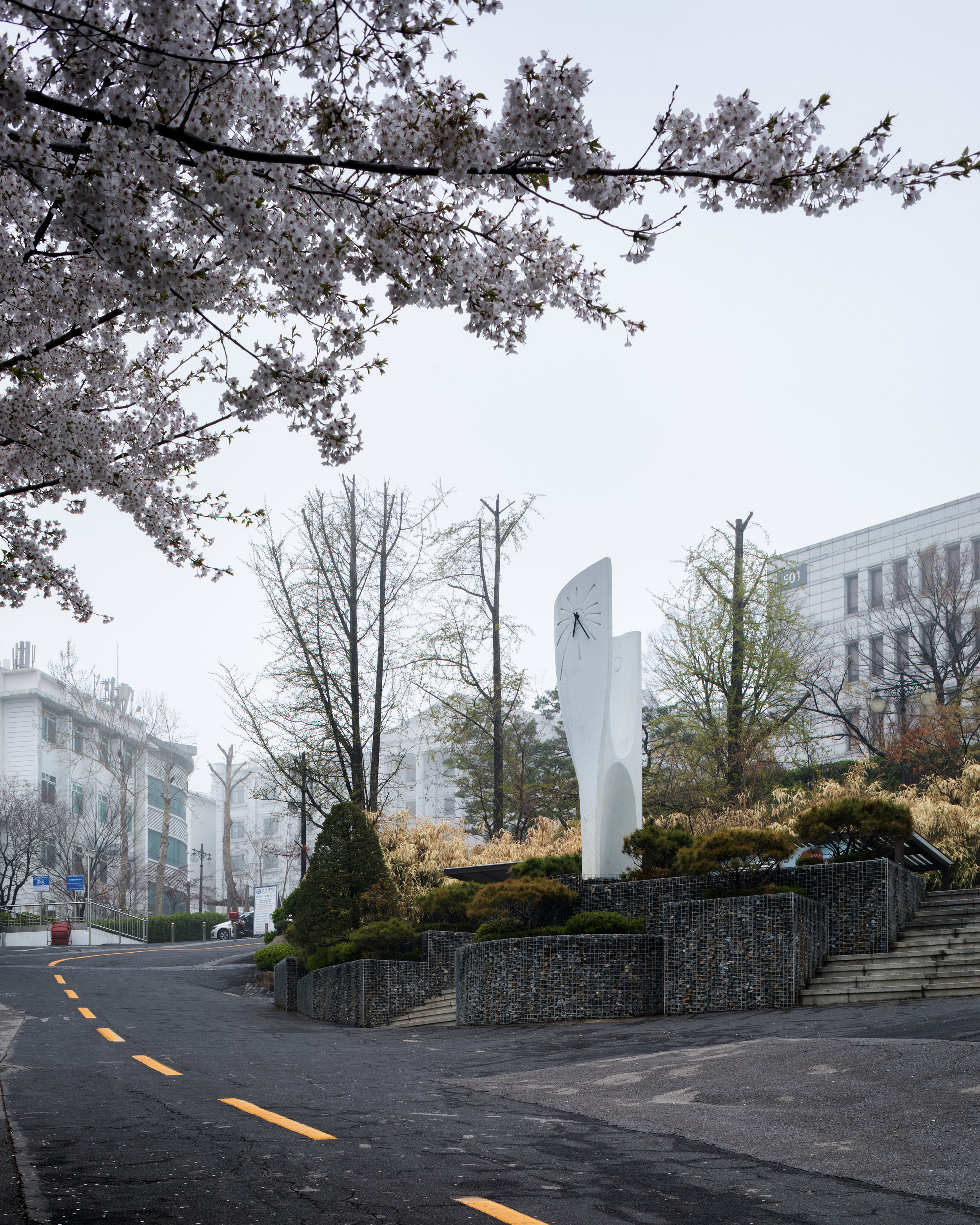


Year: 2017
Type: Public Art
Location: Seoul, Korea
Design team: Jae K. Kim, Dongwon Lee, Youngjun Lee, Yesol Lee
Construction: Miicon
Photography: Rohspace, Narsilion
Semiotic Morphology seeks to establish a design methodology which can impart symbolism through transforming linguistic characters to physical form. In contemplating the meaning of ‘symbolic’, an alphabet itself is a symbol; nevertheless, it doesn’t carry any specific meaning until the symbols are arranged into words. Thus, the physical symbols are imparted with a metaphysical meaning. Indeed, the physical form of architecture is not intended to be symbolic; but it can be in some cases seen in postmodern architecture. When the architecture is characterized by meaningful symbolism, the form takes on a greater metaphysical significance.
To replace the existing 40-year-old clock tower, the client, Han Yang University, asked that a new clock tower would represent the identity of the school as a technology-oriented institute. In this way, the institution's identifying and technological symbolism is prioritized in conjunction with the functional requirements. With this background, the project implemented a series of experiments for form generation. By morphing the two initial characters of the school, ‘H’ is transformed to ‘Y’, which generates an overall form organically.
From the construction aspect, an obstacle was making a continuously curved surface. This prevented the use of typical reinforced concrete even though concrete is appropriate for the project due to its materiality representing durability and endowing a feeling of massiveness. To overcome this disadvantage, UHPC (Ultra High Performance Concrete) is chosen and cast into an EPS (Expanded Polystyrene) form fabricated by a 5-axis CNC machine.
The methodology can be achieved through the manipulation of linguistic symbols, in this case the institutes' initials, to finally engender a symbol of the institute in the form of a functional sculpture.


